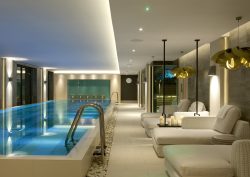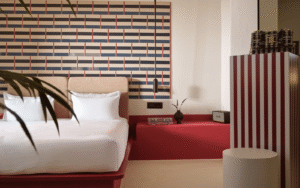Editor Hamish Kilburn joined the team at Geberit UK for the day, inside its headquarters in Warwick, to learn about the brand’s research, development and check out a few products while there…
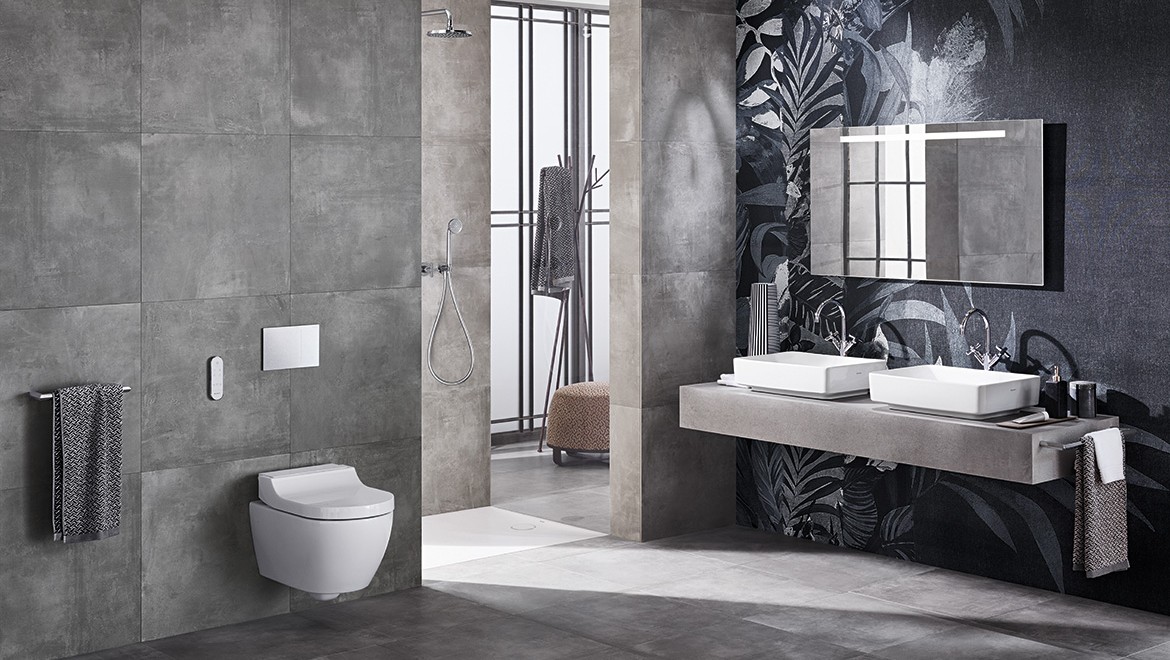
In 2015, following the acquisition of ceramics company Sanitec, bathroom and sanitary brand Geberit doubled in size overnight. The Swiss bathroom company, with 26 production sites that are scattered mainly throughout Europe, embarked on a new mission. This involved competing alongside other bathroom manufacturers to offer more complete wellness solutions in both the residential and hospitality arenas – behind and in-front of the wall.
Inside Geberit’s UK headquarters, it’s impossible to miss the company’s history. That’s because there’s a full wall in the showroom area that has been transformed into an over-sized timeline showing many other milestones in the company’s history.
Five significant moments that stood out were:
- 1874 – Caspar Melchior Gebert started a plumbing business in Rapperswil, Switzerland.
- 1964 – Geberit launch its first concealed cistern.
- 1977- Launch of Geberit installation systems and shower toilets in Europe.
- 1997 – Geberit Silent-DB20, the world’s first welded acoustic drainage system is launched.
- 2016 – Geberit ranked in the top 100 most innovative companies by Forbes.
In terms of products, it is refreshing to see Geberit expanding its offering to include innovative and intuitive bathroom furniture as well high-quality WCs and ceramics – there is a product and / or solution for every corner of the market and sector, demonstrating how Geberit truly embodies their Design Meets Function ethos. For the hotel industry, hero designs include the Geberit AquaClean Mera Comfort Shower Toilet – offering freshness and cleanliness for everyone and an increasingly popular Swiss invention to add a sense of luxury to any hotel guest room. The Geberit Duofix Frame with concealed cistern allows hotel designers to reduce water consumption through low litre flushing without compromising on design or performance.

Image credit: Geberit
Beyond the conventional, people visiting the showroom can explore (and even test) the company’s ‘Shower Toilets’, of which there are three different products to choose from, all varying in price and of course, functionality. And if you ever worry about the robustness of a stylish ‘wall hung’ toilet, they are supported by a frame that can sustain the weight of four baby elephants (400 kgs).
Products aside, what strikes me most about Geberit’s style in this congested market is its dedication to research and development, which goes beyond lab testing. Every year, the company launches its Hotel Guest Report, which serves as a healthy injection of qualitative research around a particular topic. This year, the spotlight was on ‘stimulating wellness’, which involved the likes of Jane Pendlebury, CEO, HOSPA, Wren Loucks, CEO, BeKin and Alon Baranowitz of Baranowitz + Kronenberg to explore the role of sensory design in wellness.
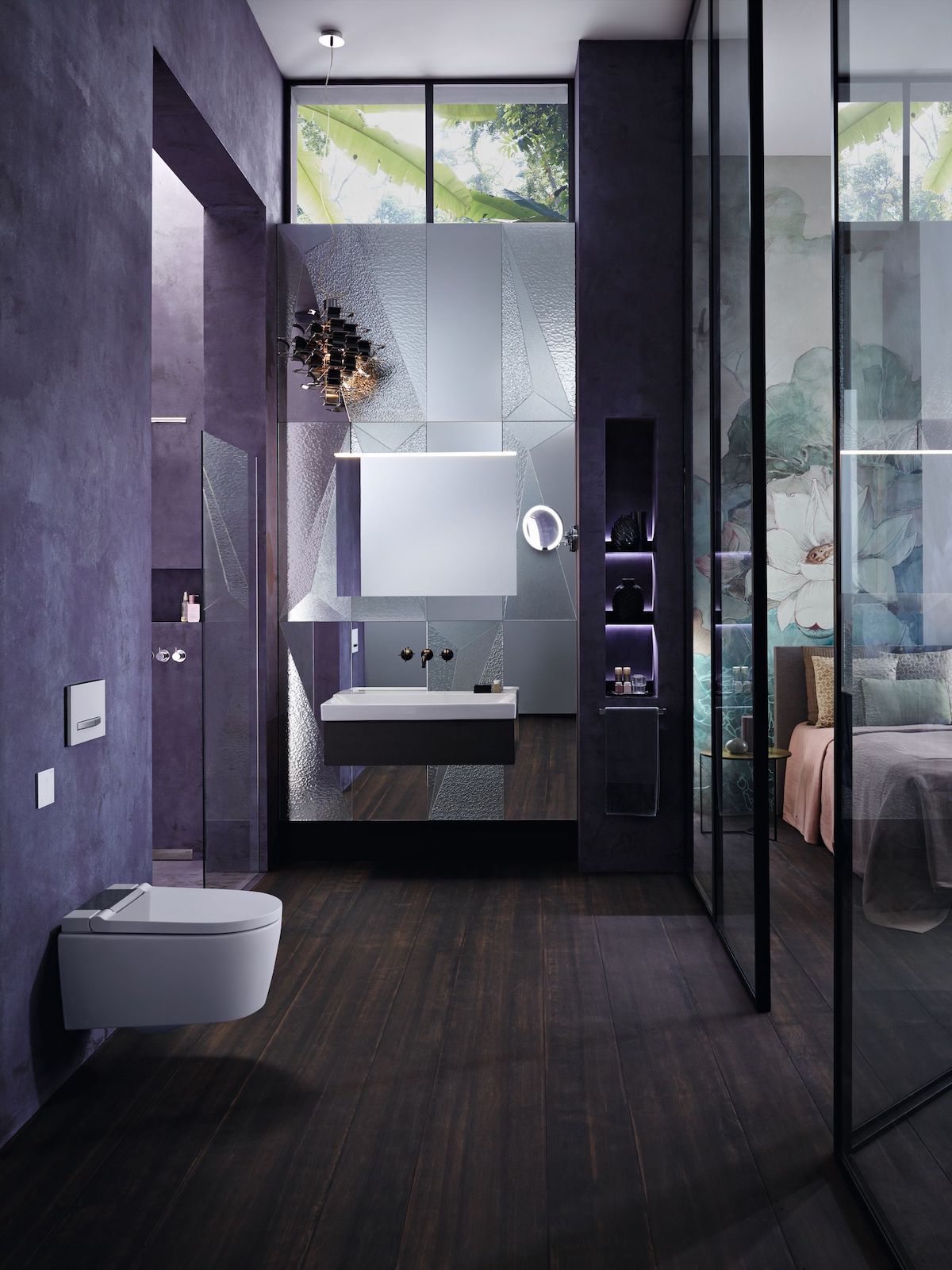
Image credit: Geberit
Not only is the company investing in learning and insights from industry experts in terms of challenges, constraints and opportunities when it comes to noise reduction in hotel design, but it is also actively testing new concepts in their Building Technology and Acoustics Laboratory based at their Headquarters in Switzerland. During my visit to Warwick, I had the pleasure of speaking to a man who is arguably most in the know regarding the need for better acoustics in the UK. Martin Murray works as National Specification Sales Manager and was there to guide me through the topic. “Currently, despite there being legal requirements in Europe, the UK construction industry is, to an extent, designing blind when it comes to acoustics and noise reduction,” he said. “Can you believe that there are only guidelines and not government-led regulations to abide to.”
You might respond to this by asking why this matters. One of the many answers is ‘wellbeing’. As well as research showing that noise pollution contributes to stress and high blood pressure, cardiovascular disease, diabetes and even hair loss, Geberit’s extensive Acoustics whitepaper from 2021 revealed that prolonged exposure to noise can also create negative feelings, such as irritation, dissatisfaction and nuisance, as well as a feeling of having one’s privacy invaded. Noisy work and home settings have been proven to annoy people, with evidence of depression and anxiety resulting from noise annoyance (NCBI, 2015).
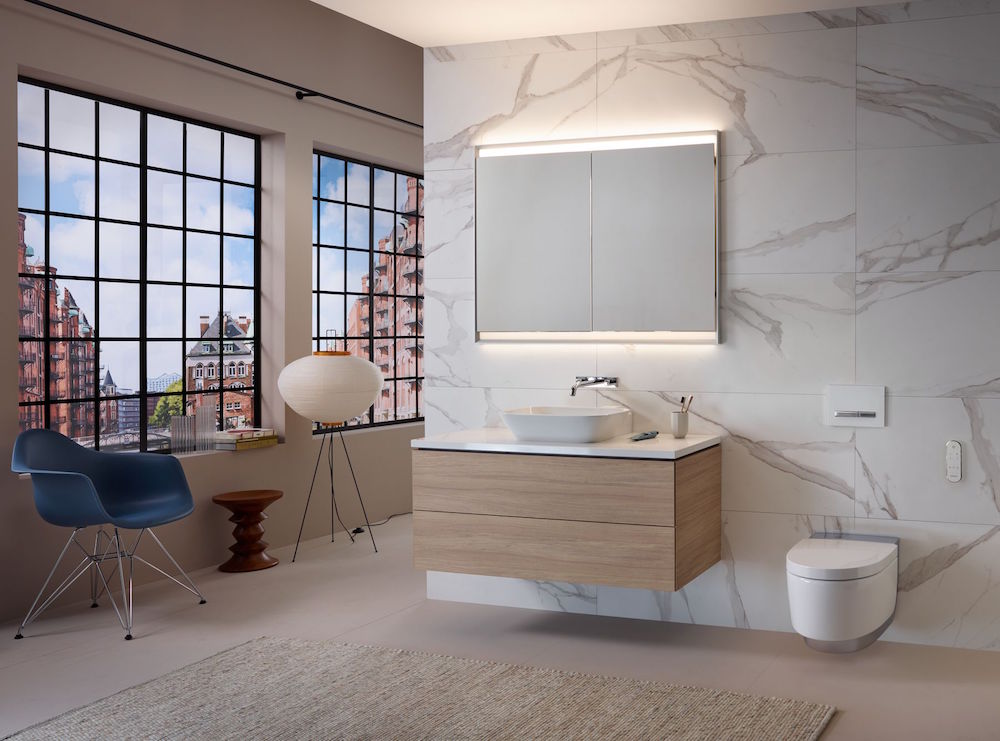
Image credit: Geberit
At the heart of Geberit’s research around noise is its very own Acoustic testing centre in Rapperswil-Jona, Switzerland – a four-storey building where virtually any construction situation can be acoustically recorded using state-of-the-art measurement technology. This truly global leading facility enables best-in-class experts to research products, technologies and also the impact that various installation techniques have on sound emissions, ensuring more effective solutions for all.
Murray goes on to tell me that the optimum sound produced by hotel rooms should be no higher than 25 dB(A). From this continual research, Geberit refines its products to adhere to what should be global industry standards. Its Geberit Silent-db20, for example, is made with acoustic dampening ribs – and the HDPE (plastic pipe) is augmented with a mineral filler, which in effect makes the walls more dense so that the sound is dampened.

Image credit: Geberit
The other heavily contested misconception in today’s bathroom scene is around water saving. While the intention has been to save water and, in the process, do better for the environment, the reality of less water in a drainage system can be messy. Through thorough research, Geberit has learned that many developers have become awash with complaints of pipes blocking due to not enough water volume being passed through the waste system. It is easy to demonstrate that lower water volumes should also result in smaller pipes, but this reality is much harder to manifest.
A solution to this wide-spread issue is to change the components themselves so that they manage better with the lower volumes that modern day demands – and in the case of Geberit Silent db20 – does so quietly. With Geberit’s lab facilities, which is available for visits by designers, architects, and contractors alike, it is Geberit’s resolution to show the industry tests of various configurations and even settings in order to create the best-performing system for the building the bathroom is in.
Geberit is one of our Recommended Suppliers and regularly features in our Supplier News section of the website. If you are interested in becoming one of our Recommended Suppliers, please email Katy Phillips.
Main image credit: Geberit





